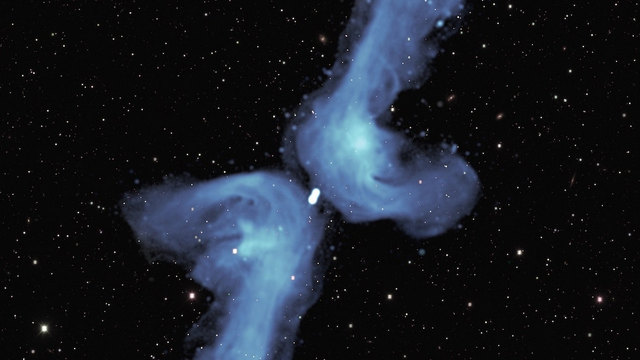
Many galaxies have enormous twin jets of radio waves extending into intergalactic space. Normally these go in opposite directions, coming from a massive black hole at the centre of the galaxy, but a few are more complicated, appearing to have four jets forming an X on the sky.
Several explanations have been proposed to explain this. These include changes in the direction of spin of the black hole at the centre of the galaxy, and associated jets, over millions of years; two black holes each associated with a pair of jets; and material falling back into the galaxy being deflected into different directions forming the other two arms of the X.
This dramatic new image of the galaxy PKS 2014-55, taken using South Africa’s MeerKAT telescope, strongly favours the latter explanation, astronomers say, as it shows material “turning the corner” as it flows back towards the host galaxy.
The shape could perhaps best be described as a “double boomerang”. The two jets each extend 2.5 million light-years into space – comparable to the distance between the Milky Way and the Andromeda galaxy, our nearest major neighbour.
Eventually, they are turned back by the pressure of tenuous intergalactic gas. As they flow back towards the central galaxy, they are deflected by its relatively high gas pressure into the shorter horizontal arms of the boomerang.
This work was carried out by a team from the South African Radio Astronomy Observatory, the University of Pretoria, Rhodes University, and the US National Radio Astronomy Observatory.
Their paper has been accepted for publication in Monthly Notices of the Royal Astronomical Society. It is currently available on the preprint server arXiv.
